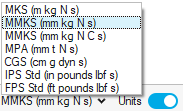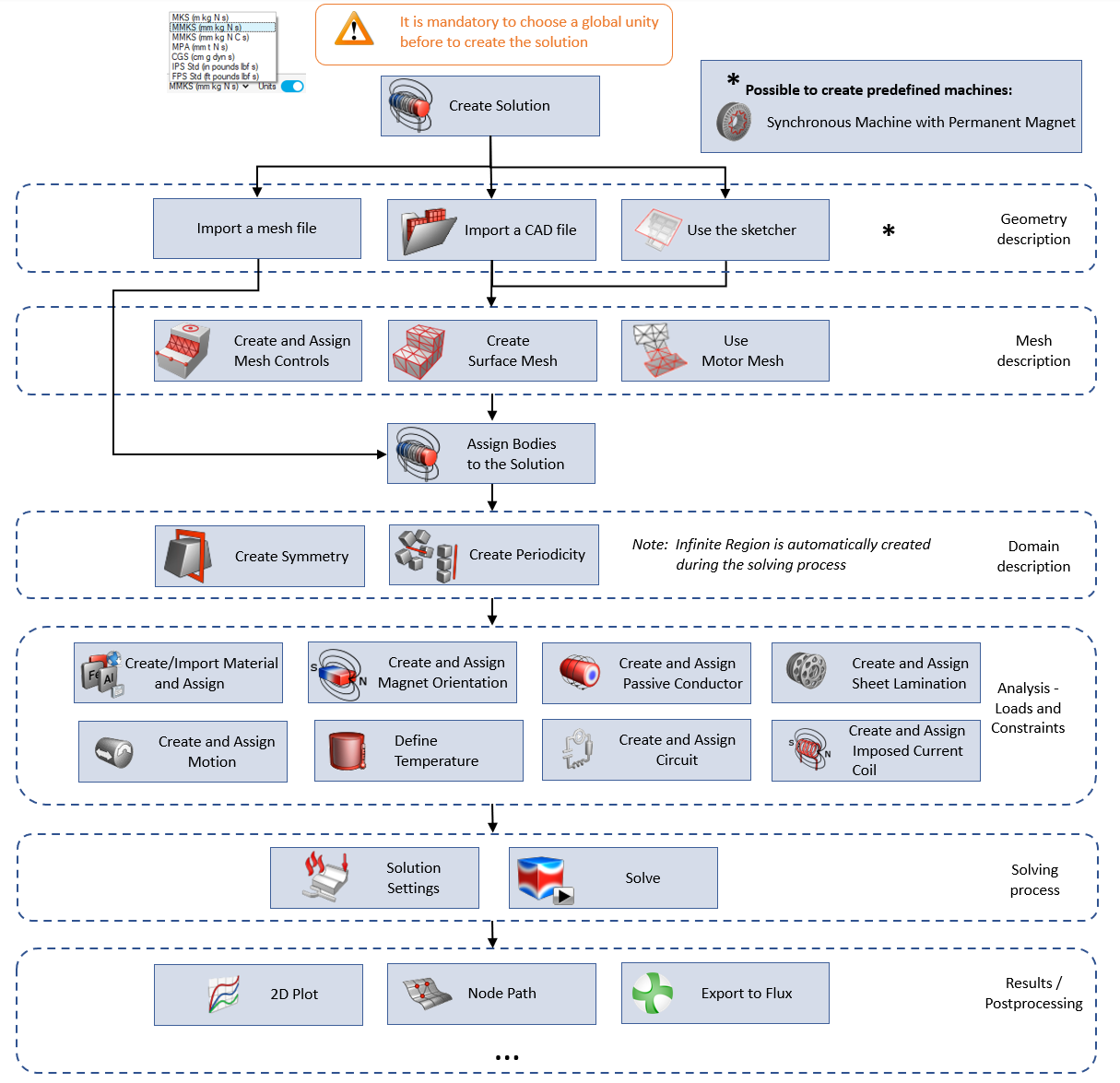Introduction of 2D Transient Magnetic
Presentation
The Transient Magnetic application allows the study of the phenomena created by a time variable magnetic field. The magnetic field is related to the presence of variable currents (and possibly permanent magnets).
This application allows the consideration of induced currents in conducting regions (Eddy currents). It allows the consideration of skin effects and proximity effects in the conducting regions, too.
Use
The Transient Magnetic application can be used for different types of devices. We are principally interested in the study of devices supplied by current of varied shape (echelon, trapezoid…) or by transient phenomena (linked to current variation caused by powering, short circuits…)
The Transient Magnetic application is principally used with Circuit coupling and/or Kinematics coupling for rotating machines, transformers, etc. study in transient state.
Skewed modelization
For a 2D solution, the user can apply the Skewed Motoroption.
Workflow
A graphic view of the 2D Transient Magnetic workflow with functionalities possibles is presented below.
All functions are available in the different ribbon bars Geometry, Mesh, Analysis, ...
The content of each ribbon is adapted depending on the active solution.
- Activate

- Choose the wanted system

For more details on Unit System, please refer to the main page Unit System.

Correspondence between Flux and SIMLAB for 2D Transient Magnetic
| Categories | SimLab | Flux |
|---|---|---|
| Geometry | Vertex | Point |
| Edge | Line | |
| Face | Face | |
| Coordinate | Coordinate systems | |
| Sketch variables | Geometric parameters | |
| Move | Transformation | |
| Domain | Infinite Box (automatic) | Infinite Box |
| Symmetry | Symmetry | |
| Periodicity | Periodicity | |
| Mesh | Mesh Controls | Aided Mesh |
| Mesh point, line | ||
| Relaxation line, face | ||
| Physics | Material | Material |
| Not implemented | Point Region | |
| Not implemented | Line Region | |
| Loads and Constraints | Face Region | |
| Motion | Mechanical set | |
| Imposed Current Coil Loads and Constraints | Circuit component - Coil conductor | |
| Solid Conductor Loads and Constraints | Circuit component - Solid conductor | |
| Circuit Designer Circuit Catalog |
Circuit editor | |
| Magnet Loads and Constraints | Magnetic non conducting region + Orientation of the magnet + Demagnetization | |
| Sheet Lamination Loads and Constraints | Laminated non conducting region | |
| Solution settings | Solution scenario |
Main 2D Transient Magnetic Limitations / Advices
- It’s mandatory to define a unit system before defining a 2D Transient Magnetic solution.
- Physical parametric calculations are possible using the new parameter manager.
-
All FLUX models of materials are not available in SIMLAB.
Note: For more details, consult the dedicated page for the 2D Transient Magnetic solution: Material (for MT2D solution). -
It is possible to Export and open in Flux at any time, as long as the bodies are meshed and assigned to the solution.
Use the right click on the Solution to open the contextual menu, and click on Export and open in Flux.
→ The SimLab Database *.slb is converted into a project *.FLU.
→ This project *.FLU is created in the selected working directory and Flux is automatically launched and this project *.FLU is opened.
→ Then you can use this project in Flux.
Note: This conversion can be useful to use physical Flux models that are not yet implemented in SimLab (material model, non meshed coil, magnetic cut, …).